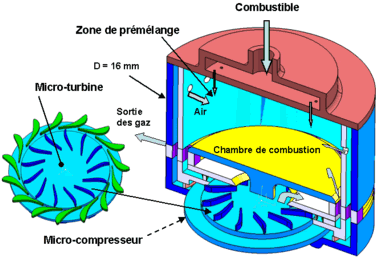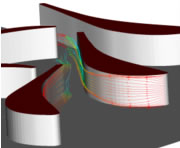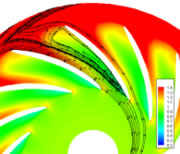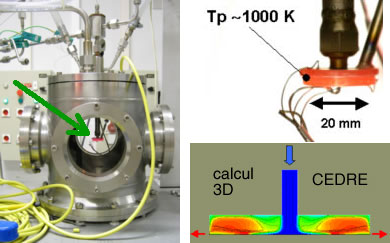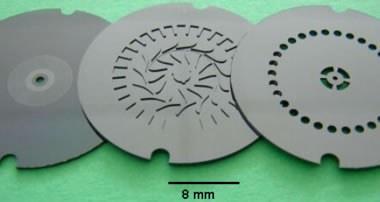Future miniature drones must be supplied by miniature energy sources. The best adapted seem to be micro-turbines. However, designing of turbines measuring a few cubic centimetres is a bit chancy. Researchers are looking into flow modification, the design of new geometries, micro-manufacturing and thermal studies.
Number 29
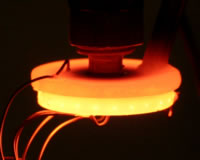 This combustion chamber only measures 20 mm in diameter and is 2.7 mm thick. Supplied by a hydrogen-air mixture, it produces a power of up to 1200 W. |
Imagine drones the size of a bird, capable of flying for hours, of filming scenes and transmitting information. Many engineers are bent on designing such miniature drones, for civilian and military applications. One of the many difficulties is supplying energy to the engines, which must be both powerful and also extremely light. Batteries are too heavy and have too little independence for these micro-drones with wingspans of 15 centimetres and similar length, weighing around a hundred grams. As far as fuel cells are concerned, these do no yet exist in the range of power under research. That leaves gas turbines remain, which could provide ten times more energy than a battery with the same mass. |
|
A turbine transforms energy from fuel into rotational motion, either to directly supply a propeller, or to produce electricity. "Our goal is to make a micro-gas-turbine, for future micro-drones", says Joël Guidez. These micro-turbines will supply the electric motor driving the drone wings, as well as the electrical equipment, such as transducers, and even a small camera.
Meanwhile, these microscopic structures can not be too complex, or it may not be possible to manufacture them. The first chamber constructed had a quite simple geometry: It was a cylinder with a 20 millimetre diameter, 2.7 mm tall, having a tube in its centre off which the gas bounces. It is thus sent around the periphery of the chamber, where it mixes with the gases present. This chamber serves above all to test the manufacturing and measuring methods of ONERA's laboratory. The manufacture of a second, more complex and better performing chamber is underway.
Current experiments are being carried out using hydrogen as fuel for several reasons. Since it is very light, it diffuses easily. Additionally, its chemical reaction time (the necessary time for the combustion chemical reaction to take place) is 50 microseconds, ten times shorter than that of the hydrocarbons that are usually used. Also, in a micro-combustion-chamber, the time it takes the gases to cross the combustion chamber is very brief. The more the dimensions of the chamber are reduced, the more this time is reduced. However, it must remain as five times greater than the chemical reaction time, without which combustion would be poor. On the other hand, a hydrocarbon is easier to store than hydrogen. Near future studies shall therefore be directed towards the hydrocarbon combustion stability within these very small chambers.
Finally, let us not forget the rest of the gas turbine, specifically the rotating parts. The turbine vanes can be made to spin at a very great speed, up to a million revolutions per minute. The manufacture of 8mm turbine vanes can prove to be complex. Silicon etching may be a solution, unless micro-machining techniques are favoured. "This manufacture will require all sorts of specific technologies", says Joël Guidez. But the crucial question is that of the bearings and stops, which hold the turbine shaft. In the usual turbines, ball bearings serve this purpose. Here, hydrodynamic bearings would be used: the gas flows sustain the rotating parts without these touching the fixed parts.
Cécile Michaut, scientific reporter. |
|



